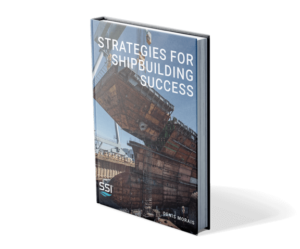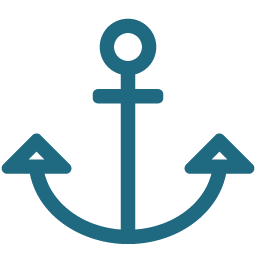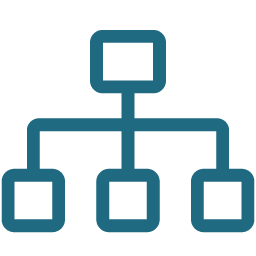
Projects with the level of scale and complexity as the ones your organization takes on involve an enormous amount of data that is generated at every stage. The number dwarfs that of other manufacturing industries. When that data is housed in disparate, fragile, and opaque systems, it makes getting any real insight into your project a headache, even when the existing processes are working properly. With your organization in control of their shipbuilding data, they are at a huge advantage over a shipbuilder who is drowning in it.
Identifying Your Data Sources

A large part of the challenge is simply identifying all the data sources that are currently in use. Every department from engineering to planning to production to project management has its own data requirements and own information sources, and when they are out of sync, error and waste can be introduced. To name just a few:
- A build sequence
- Production drawings
- VFI documentation
- Isometrics
- BOMs
- CAD geometry
- CNC data
- 2D PDFs
- 3D visuals
The digital data that is being passed today is not shared in a way that links the information together, significantly reducing its value.
DENIS MORAIS, CEO
What we have consistently seen emerge through our work with other shipbuilders like HII is a tendency for information silos to emerge, with teams and departments that only touch their ‘own’ data and struggle to move critical information up or downstream when it’s needed. The coordination required to tackle changes and manage projects means that every piece of information needs to be managed, distributed, and accessible across departments– no matter where it came from or where it’s going.
Controlling Data Means Managing Data
The digital data that is being passed today is not shared in a way that links the information together, lowering its usefulness and value. For example, requirements are not linked to any of the design data of the ship, the P&IDs and other functional designs are not linked to the model, the 3D model representation is not linked to catalog items, and the list goes on. Even though on the surface, much of the data is being shared, it is not in a form that is useable without significant amounts of manual effort.
The information which would allow your organization to make fast and accurate decisions must be accessible and connected. Without that, the quality of decisions goes down and the time it takes to make them goes up.
A successful information management solution that addresses this reality at your organization will:
- Maintain a history of your data through time.
- Control when documentation becomes officially released.
- Ensure that production teams are working with the most up-to-date information.
- Include a system of record.
- Have pre-configured data with item types including parts, assemblies, drawings, spools, systems, and nests.
- Be ready out of the box to show engineering, planning, and production teams the information that matters most to them.
- Work with every shipyard workflow within your organization.
- Accept information from any source.
- Push information to wherever it is needed in whatever format.
When combined, all these factors make critical day-to-day activities like change management workflows, design reviews, and progress reports free of guesswork. With data as the new oil, managing and taking control over it is the key to long-term success and stability. The complexity of modern projects and the sheer number of individual actions to manage makes this especially true. With a long-standing focus on innovation and an understanding of what is required, your organization is well-positioned to take advantage of this new reality.

Get access to the full eBook
There is no single secret to success in the shipbuilding industry. However, there are some universal truths. In this eBook, SSI’s CEO Denis Morais outlines five key areas that forward-thinking shipbuilders need to focus on to see long-term shipbuilding success.





